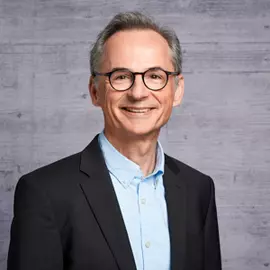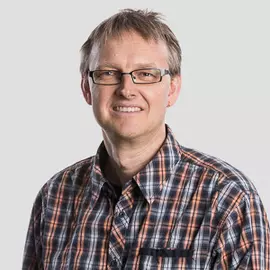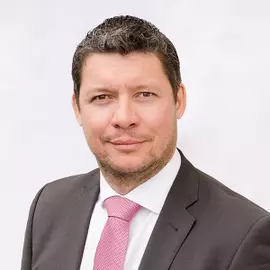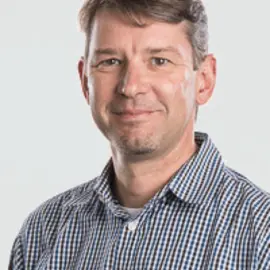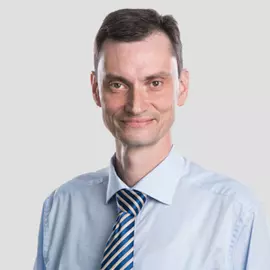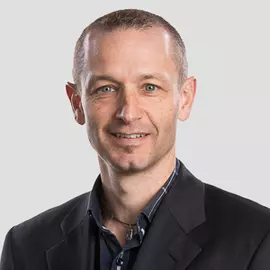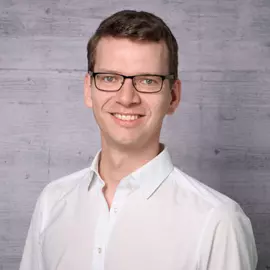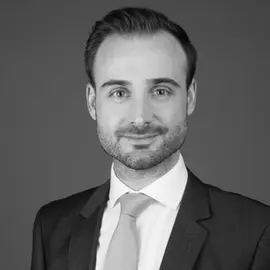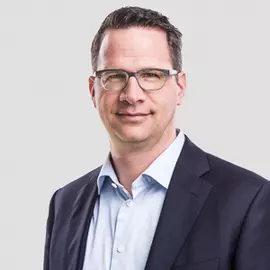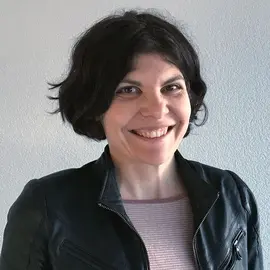Platform Additive Manufacturing
Partnering for a strong Swiss industry with additive manufacturing.
The wide-ranging potential of additive manufacturing (3D printing) enables great design freedom, cost-efficient and time-optimized production for small and medium quantities as well as the possibility of individualization in all sectors of the manufacturing industry.
Our experts at the ZHAW Platform Additive Manufacturing are at your side to successfully implement your new product, manufacturing and process ideas in the field of additive manufacturing, from the idea to the product.
New manufacturing technologies
Additive manufacturing (AM) processes are driving new business areas, enabling highly complex products, solving previously unsolved manufacturing problems, and changing value chains.
This key technology is opening new ways of thinking, solutions and applications for companies and their customers.
Development and consulting
The School of Engineering at the ZHAW, one of Switzerland's leading technical education and research institutions, , provides an AM research-to-industry platform which enables faster and efficient access to information, making the benefits of AM processes more accessible.
The AM platform offers comprehensive infrastructure, years of experience in the field of additive manufacturing methods in various forms and an interdisciplinary approach. It unifies our competencies in the areas of material development, product and production development, printer and control technology, and in advanced modeling methods, and enables our partners to implement their innovative project ideas and development projects.
Areas of expertise and fields of activity
Product Development and Production Technologies
- Product development and production technologies with optimization of the entire production chain from the idea, via Design for Additive Manufacturing (DfAM), production technologies and resources to the operational product
- Processes: Powder Bed Fusion (PBF-LB, SLM) using metals, ceramics and plastics, material extrusion (MEX, FDM) and Vat Photopolymerization (VPP, SLA)
- Development of systems and components for the efficient production of prototypes and end-user products
- Training and continuing education in the field of Additive Manufacturing, from Design for Additive Manufacturing (DfAM) to the appropriate manufacturing processes and post-processing
Contact
- Dr. Stefan Czerner (stefan.czerner@zhaw.ch) and Hanspeter Sautter (hanspeter.sautter@zhaw.ch)
- www.zhaw.ch/ipp
Materials and Processes
- Material development and qualification, tailored to individual material and process requirements
- Additive manufacturing concepts for technical ceramics, metals, polymers, and fiber composites
- Process development for new materials, e.g. high-performance alloys, glasses, sustainable polymers
- Transfer between additive technologies and series production in the injection molding process
- Material and component testing
Contact
- Prof. Dr. Dirk Penner (dirk.penner@zhaw.ch) and Prof. Dr. Rene Radis (rene.radis@zhaw.ch)
- www.zhaw.ch/impe
Mechatronic systems
- Development of multi-axis device and process technology to achieve the greatest possible design freedom in material extrusion (MEX/FDM)
- Development of new slicing strategies for material extrusion (MEX/FDM) to reduce support material
- Non-planar printing and non-planar slicing for MEX/FDM enables improvement in surface quality
Contact
- Michael Wüthrich (michael.wuethrich@zhaw.ch)
- www.zhaw.ch/ims
Thermo-mechanical process simulation
Institut für Mechanische Systeme (IMES)
- Thermo-mechanical process simulation methods (TMPS) for PBF-LB/M (hot spots, distortions, residual stresses, distortion compensation) to improve the shape accuracy and reliability of the additive manufacturing process
- Development of calibration methods for TMPS for more accurate predictions.
- Simulation-based optimization for a physically meaningful and robust adaptation of the support structures
- Development of bionic lightweight components using topology optimization to exploit the full lightweight potential and the possibility of complex shapes through additive manufacturing
- Thermo-physical and -mechanical material characterization and modelling (heat conduction, dilatometry) as a basis for simulations
- Development of design and assessment methods for additively manufactured components to take appropriate account of potential manufacturing failures in the design
Contact
- Prof. Dr. Thomas Mayer (thomas.mayer@zhaw.ch)
- www.zhaw.ch/imes
Control and optimization in additive manufacturing

Centre for Artificial Intelligence
- Targeted selection of process parameters under quality constraints via safe probabilistic model-based approaches
- Closed-loop control of AM processes using available sensor data
- Learning-based models for performance improvement
Contact
- Dr. Alisa Rupenyan (alisa.rupenyan@zhaw.ch)
- www.zhaw.ch/cai
Continuing education
The ZHAW has been offering continuing education courses for over 10 years and is the first university in Switzerland to offer a Certificate of Advanced Studies (CAS) in additive manufacturing (3D printing). Detailed information and registration:
Videos on additive manufacturing
Events in the field of additive manufacturing

AM Expo | September 12 to 13, 2023, trade fair and symposium, Lucerne Exhibition Center
The ZHAW has been organizing symposia and conferences on 3D printing and additive manufacturing since 2014.
Publications in the field of additive manufacturing
-
Lanfant, Briac; Lack, Silvan; Meyer, Benjamin; Abdulkadir, Ahmed; Stadelmann, Thilo; Schmid, Daniel,
2024.
3D-master-based method for optimizing the cost calculatin of PBF-LB/M manufactured parts.
In:
Metal Additive Manufacturing Conference (MAMC), Aachen, Germany, 17-19 September 2024.
-
2024.
Energiedichte : wo stehen wir jetzt.
In:
Angewandte Forschung & Entwicklung in der additiven Fertigung, Winterthur, Schweiz, 12. September 2024.
-
Vucko, Flavien; Ringot, Geoffrey; Marmet, Philip; Safa, Yasser; Holzer, Lorenz; Banait, Shruti; Perrin, Laura; Logé, Roland; Prestat, Michel,
2024.
Fatigue-corrosion behaviour of Ti6Al4V alloys in H2O2-containing physiological solution.
In:
EUROCORR Book of Abstracts.
European Corrosion Congress (EUROCORR), Paris, France, 1-5 September 2024.
-
Prestat, Michel; Marmet, Philip; Safa, Yasser; Holzer, Lorenz; Banait, Shruti; Perrin, Laura; Logé, Roland; Dumouchel, Maxime; Vucko, Flavien,
2024.
In:
EUROCORR Book of Abstracts.
European Corrosion Congress (EUROCORR), Paris, France, 1-5 September 2024.
-
Wick-Joliat, René; Weisshar, Florian B.; Gorbar, Michal; Meier, Daniel M.; Penner, Dirk,
2024.
CO2 capture with polyethylenimine supported on 3D-printed porous SiO2 structures.
Materials.
17(12), pp. 2913.
Available from: https://doi.org/10.3390/ma17122913
3D Printers at the ZHAW - Platform Additive Manufacturing
Research projects
-
Reduced Residual Stresses through Support Structure Optimization in Laser Powder Bed Fusion
Metal additive manufacturing (AM) has proven to be an attractive and viabletechnology for industry to produce complex components and/or small lot sizes. Thereliability and thus acceptance of metal laser powder bed fusion (LPBF) remains achallenge though. Severe thermal gradients can occur causing excessive ...
-
Enhanced Modular Multi Sensor System (MMSS) for Caprock Integrity & Gas Storage
CO2 storage and the subsequent investigation of rock movements in the mountains is the task of the overarching Mont Terri project. We, the IPP, are providing support by developing a modular sensor carrier system for the precise positioning of sensors in deep boreholes. Additive manufacturing technology and our ...
-
Carbon Capture on algorithm based highly efficient three-dimensional ceramic surfaces
The potential of additively manufactured algorithm-based structures such as the well-known TPMS triply periodic minimal surfaces is manifold. One highly interesting field of application is chemical engineering. Mathematically optimized structures allow, among other things, maximum mass and energy exchange surfaces ...
-
Enhanced prothesis for children finger replacements
Children born without hands or fingers and children who were victims of accidents in which they lost fingers or hands are the focus of our project. The goal of this work is to give them better fingers at a lower cost.The disadvantages of traditional designs are the high cost, weight, high forces to hold objects, and ...
-
Development of a intergas system for welding applications
Development of a shielding gas system for joint welding of high-grade materials.



















